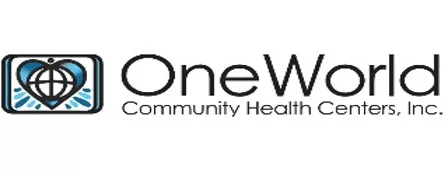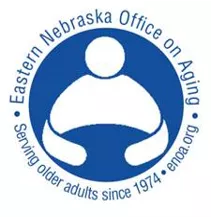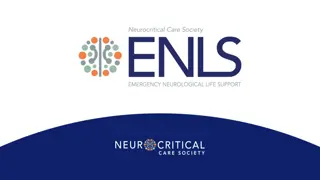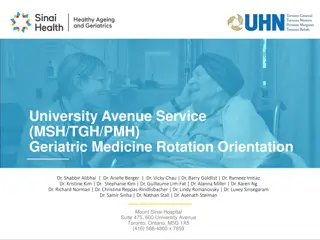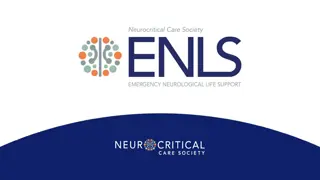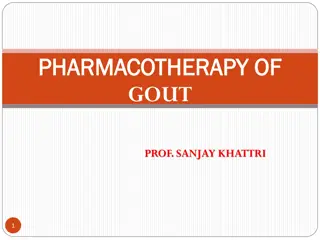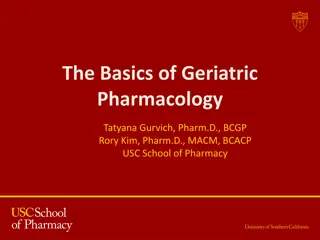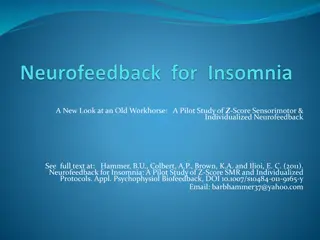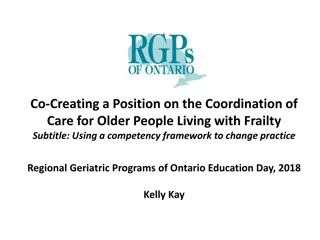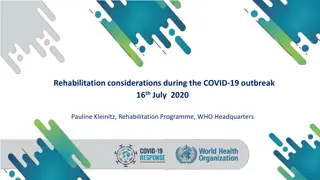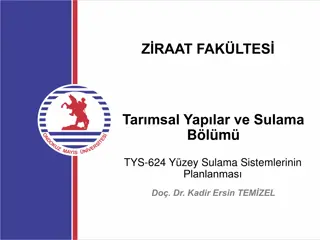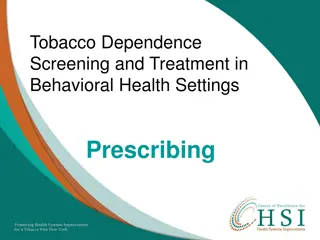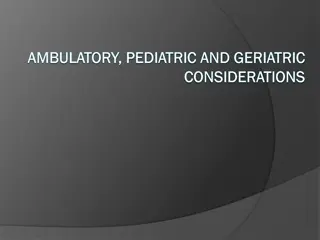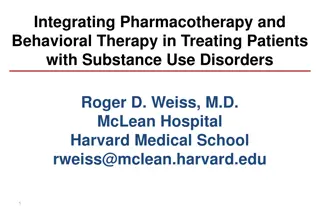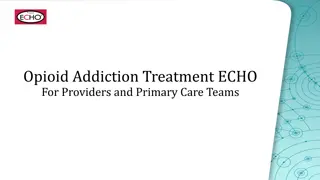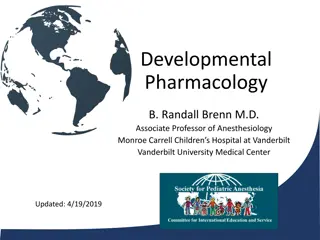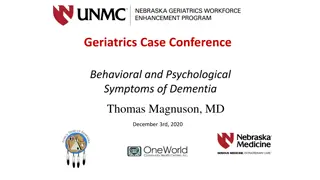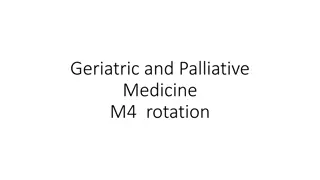Optimizing Geriatric Pharmacotherapy: Challenges and Considerations
This content elaborates on the Nebraska Geriatrics Workforce Enhancement Program, supported by HRSA, focusing on age-friendly primary care and the 4Ms approach to medication management in older adults. It addresses the objectives of understanding factors affecting drug use in the elderly, recognizing inappropriate prescribing, and discussing optimal prescribing principles. Additionally, it highlights the challenges of geriatric pharmacotherapy, such as polypharmacy, adverse drug events, and medication adherence. Effects of aging on drug absorption and volume distribution are also explored in detail.
Download Presentation

Please find below an Image/Link to download the presentation.
The content on the website is provided AS IS for your information and personal use only. It may not be sold, licensed, or shared on other websites without obtaining consent from the author. Download presentation by click this link. If you encounter any issues during the download, it is possible that the publisher has removed the file from their server.
E N D
Presentation Transcript
NGWEP The Nebraska Geriatrics Workforce Enhancement Program A partnership between Nebraska Medicine, UNMC , community-based organizations and primary care sites
This program is supported by the Health Resources and Services Administration (HRSA) of the U.S. Department of Health and Human Services (HHS) as part of an award totaling 751,695.00 with 0% financed with non- governmental sources. The contents are those of the author(s) and do not necessarily represent the official views of, nor an endorsement, by HRSA, HHS, or the U.S. Government. For more information, please visit www.HRSA.gov.
Age Friendly Primary Care: These are the 4 important things
4Ms: Medications Linda Sobeski, PharmD, BCPS Clinical Associate Professor UNMC College of Pharmacy Updated: 4/2018 Updated: 7/2022
5 Objectives: Describe the physiologic, pharmacokinetic, and pharmacodynamic factors which affect drug use in the elderly Describe Describe risk factors and identify drugs commonly associated with adverse drug events in the elderly Describe Recognize potentially inappropriate drug use and recommend alternative therapy where appropriate Recognize Discuss Discuss principles of optimal prescribing for older patients
Challenges of Geriatric Pharmacotherapy Inappropriate prescribing (Beers and others) Changes in aging physiology Pharmacokinetics Pharmacodynamics Polypharmacy Adverse drug events Medication adherence
Effects of Aging on Drug Absorption Passive diffusion: Active transport First-pass extraction No change in overall F for most drugs Decreased GI motility & blood flow counterbalanced by increased transit time Decreased F for some drugs: ions, vitamins, minerals Ca2+ in the setting of increased GI pH Increased F for high extraction drugs: e.g. TCAs, methylphenidate, propranolol Slowed or reduced activation of prodrugs: e.g. enalapril
8 Effects of Aging of Volume of Distribution (Vd) Aging Effect Total body water Vd Effect Vd for hydrophilic drugs plasma concentration Examples Ethanol, lithium, digoxin, propranolol, HCTZ, theophylline, cimetidine, aminoglycosides, procainamide, quinidine Fat stores Vd for lipophilic drugs terminal half-life Benzodiazepines, trazodone, amiodarone, haloperidol or Albumin % of unbound or free drug (active drug) Phenytoin, warfarin, NSAIDs, diazepam, valproic acid, furosemide, propranolol, quinidine, salicylate
9 Effects of Aging on Hepatic Metabolism Pathway Effect Hepatic mass and blood flow Examples Phase I: oxidation, reduction, hydroxylation, demethylation Diazepam, alprazolam, chlordiazepoxide TCAs, citalopram, paroxetine Risperidone, haloperidol Propranolol, metoprolol, CCBs Diclofenac, ibuprofen Theophylline Quinidine Carbamazepine, phenytoin Omeprazole Erythromycin Clearance and t1/2 for some drugs (active metabolites) Phase II: conjugation, glucuronidation, acetylation, sulfation No change Lorazepam, temazepam, oxazepam Warfarin Ethanol Prazosin Isoniazid (inactive metabolites) Note: Medications undergoing only phase II metabolism preferred in elderly
10 Renal Excretion Renal function progressively declines with age, independent of disease Renal mass, blood flow, functional nephrons, tubular reabsorption Renal tubular flow is mostly preserved due to increase in filtered fraction (increased filtration pressure d/t efferent arteriolar vasoconstriction) By age 85y, ave. CrCl declines to 50% of what it was at age 25y Decreased clearance of renally eliminated drugs and active metabolites Drugs: e.g: aminoglycosides, vancomycin, quinolones, atenolol, quinidine, digoxin, furosemide, spironolactone, HCTZ, gabapentin, H2-blockers, allopurinol, lithium, NSAIDs, ACE inhibitors Metabolites: e.g: n-acetyl procainamide, 0-desmethylvenlafaxine, M3G, M6G
Estimating GFR in the Elderly SCr alone not a reliable indicator of renal function Lean body mass = lower creatinine production SCr stays in normal range masking changes in CrCl CrCl (Cockroft-Gault) has best predictability in elderly (ABW in kg) x (140-age) ------------------------------ x (0.85 for females) 72 x (Scr in mg/dL) CrCl = Use adjusted body weight (AjBW) if BMI >40 kg/m2 BMI = ABW in kg/[ht in meters]2 OR 703 x (WT (lbs)/[HT (in)]2)
12 Example: CrCl vs Age in a 5 5 55kg Female Age (yr) SCr (mg/dL) CrCl (mL/min) 30 1.1 65 50 1.1 53 70 1.1 41 90 1.1 30
13 Pharmcodynamics Evidence of altered drug response or sensitivity of older adults to some drug classes Mechanisms: Changes in receptor numbers/density Changes in receptor affinity Changes in signal transduction mechanisms Impaired cellular response in affected organs Age-related changes in homeostatic mechanisms
Pharmacodynamics and Aging Increased sensitivity Decreased sensitivity Digoxin Warfarin Alpha-blockers Diuretics Vasodilators Anticholinergics Alcohol Opioids Benzodiazepines Antipsychotics Beta-blockers Beta-agonists CCB (cardiac conduction)
15 Adverse Drug Events (ADEs) Rate of ADEs in older adults: 2.5-50.6% Responsible for 5-28% of acute geriatric hospital admissions 106,000 deaths + $85 billion spent in 2000 >95% of ADEs are predictable ~50% of ADEs are preventable Most errors occur at the ordering and monitoring stages
16 Most Common Medications Associated with ADEs Opioid analgesics NSAIDs GI bleed Fluid retention (HTN, CHF, peripheral edema) Renal impairment Anticholinergics Benzodiazepines Also: cardiovascular agents, CNS agents, and musculoskeletal agents Adverse Drug Reaction Risk Factors in Older Outpatients. Am J Ger Pharmacotherapy 2003;1(2):82-89.
17 Patient Risk Factors for ADEs Medication non- adherence Inappropriate prescribing Medication underuse Polypharmacy Multi- morbidity Low WT or BMI Prior ADEs Age > 85y CrCl <50 mL/min
18 Polypharmacy Definition: administration of more medications than are clinically indicated Rate is 55-59% of older outpatients SNF: 27.1% take 9 or more medication regularly Average 2-9 prescription medications daily in community dwelling elderly Use of dietary supplements adds to burden 46-59% use vitamin/mineral supplement 11-14% use herbal supplements
19 Prescribing Cascade Drug 1 ADE interpreted as new medical condition Drug 2 ADE interpreted as new medical condition Drug 3 Rochon PA, Gurwitz JH. Optimizing drug treatment in elderly people: the prescribing cascase. BMJ 1997;315:1097.
Avoiding Polypharmacy Avoid prescribing before diagnosing Not every complaint requires a pill Consider non-pharmacologic therapy Be reluctant to start drugs that will be hard to stop Beware of the prescribing cascade
21 Inappropriate Prescribing Definition: prescribing drugs that should be avoided because risk outweighs benefit Explicit criteria: 20% of home care patients 25% of long-term care residents Beers Start/Stopp FORTA-US HEDIS PRISCUS
22 The Beers Criteria (2019) Drug Anticholinergics: First-generation antihistamines e.g. diphenhydramine, hydroxyzine, meclizine Concern Alternatives Highly anticholinergic Decreased CL Tolerance to hypnotic effects Intranasal saline, intranasal steroids 2nd generation agents: fexofenadine, loratadine Exception: DPH in acute allergic reactions For itching: moisturizers Gastrointestinal agents: PPIs Risk of C. difficile infection, bone loss and fractures Antacids PRN H2 blockers Avoid scheduled use for >8 weeks unless high- risk patient (chronic NSAID or steroid use, erosive esophagitis, Barrett s esophagus, ZE, or demonstrated need for maintenance treatment) AGS 2019 Beers Criteria Update Expert Panel. American Geriatrics Society 2019 Updated Beers Criteria for Potentially Inappropriate Medication Use in Older Adults. JAGS 2019.
23 The Beers Criteria (2019) Drug CNS agents Antidepressants: e.g. amitriptyline, doxepin, nortriptyline, paroxetine Concern Alternatives Highly anticholinergic For depression: SSRIs (except paroxetine), SNRIs, bupropion Cause orthostatic hypotension For neuropathic pain: SNRIs, gabapentin, pregabalin, topical capsaicin, lidocaine patch CNS agents: Antipsychotics Antiemetics e.g. promethazine, prochlorperazine Increased risk of CVA and greater rate of cognitive decline and mortality in dementia. Behavioral interventions Avoid for BPSD unless failure of non-pharmacologic options AND substantial risk of harm to self or others. For N/V: Ondansetron Exceptions: schizophrenia, BPAD, or short-term use as entiemetic during chemotherapy AGS 2019 Beers Criteria Update Expert Panel. American Geriatrics Society 2019 Updated Beers Criteria for Potentially Inappropriate Medication Use in Older Adults. JAGS 2019.
24 The Beers Criteria (2019) Drug CNS agents: Benzodiazepines: alprazolam lorazepam diazepam clonazepam Concern Alternatives Increased sensitivity and decreased metabolism For anxiety: SSRIs, SNRIs, buspirone Increased risk of cognitive impairment, delirium, falls, fractures, and MVAs Possible exceptions: seizure disorders, REM sleep disorders, benzodiazepine withdrawal, ethanol withdrawal, severe GAD, periprocedural anesthesia CNS agents: BZRA hypnotics: eszopiclone zolpidem zalpelon ADEs similar to BZD: delirium, falls, fractures Increased ER visits, hospitalizations, MVAs Sleep hygiene (preferred) Melatonin Low-dose trazodone Low-dose mirtazapine Minimal improvement in sleep latency and duration AGS 2019 Beers Criteria Update Expert Panel. American Geriatrics Society 2019 Updated Beers Criteria for Potentially Inappropriate Medication Use in Older Adults. JAGS 2019.
25 The Beers Criteria (2019) Drug Concern Alternatives CV agents: Alpha1 blockers: e.g. doxazosin, prazosin High risk of OH ACE-I, ARB CCB Thiazide Alternative agents have superior risk/benefit profile CV agents: Digoxin A-fib: Avoid as first-line agent due to safer and more effective alternatives For A-fib: BB or LA non-DHP CCB CHF: Evidence for benefit vs. harm is conflicting; other first-line agents have strong evidence to support reduced hospitalizations and mortality For CHF: BB, ACE-I/ARB, spironolactone Avoid doses >0.125mg/d; decreased CL may increase risk of toxicity AGS 2019 Beers Criteria Update Expert Panel. American Geriatrics Society 2019 Updated Beers Criteria for Potentially Inappropriate Medication Use in Older Adults. JAGS 2019.
26 The Beers Criteria (2019) Drug Concern Alternative CV agents: Alpha agonists, central: e.g. clonidine High risk of CNS adverse effects May cause bradycardia and OH Thiazides** ACE-I, ARB* LA CCB** *preferred for DM, CKD, CHF **preferred in African Americans CV agents: Antiarrhythmics: amiodarone Greater toxicity than other antiarrhythmics Rhythm control: dofetilide, flecainide, propafenone Exception: A-fib + HF or reduced LVEF when rhythm control is preferred over rate control AGS 2019 Beers Criteria Update Expert Panel. American Geriatrics Society 2019 Updated Beers Criteria for Potentially Inappropriate Medication Use in Older Adults. JAGS 2019.
27 The Beers Criteria (2019) Drug Endocrine agents: Androgens Concern Alternatives Potential for cardiac problems Avoid unless confirmed hypogonadism with clinical symptoms Endocrine agents: Estrogens (systemic) Carcinogenic potential and thromboembolism risk For dyspareunia and vulvovaginitis: vaginal estrogen Avoid systemic use For vasomotor symptoms: SSRI, SNRI, gabapentin Exception: Intravaginal estrogen safe and effective for vaginal atrophy Endocrine agents: sulfonylureas, LA: e.g. glyburide, glimepiride Higher risk of severe prolonged hypoglycemia SA sulfonylureas (e.g. glipizide, gliclazide) Metformin AGS 2019 Beers Criteria Update Expert Panel. American Geriatrics Society 2019 Updated Beers Criteria for Potentially Inappropriate Medication Use in Older Adults. JAGS 2019.
28 The Beers Criteria (2019) Drug Pain medications: Non-COX II selective NSAIDs (PO): e.g. naproxen, ibuprofen, meloxicam, diclofenac, aspirin >325mg Concern Increased risk of GI bleeding + PUD in high-risk groups (>75y; concomitant corticosteroids, anticoagulants, antiplatelet agents) Alternatives Scheduled APAP Tramadol Opioids Topical lidocaine Topical capsaicin Counter irritants Non-pharmacologic: TENS PPI or misoprostol reduces, but does not eliminate risk UGI ulcers, gross bleeding, or perforation = ~1% of patients treated for 3-6 months and ~2-4% of patient treated for 1 year; trend continues with longer duration Increased risk of elevated BP and AKI Avoid chronic use unless other alternatives not effective and patient can take gastroprotective agent AGS 2019 Beers Criteria Update Expert Panel. American Geriatrics Society 2019 Updated Beers Criteria for Potentially Inappropriate Medication Use in Older Adults. JAGS 2019.
29 The Beers Criteria (2019) Drug Pain medications: Skeletal muscle relaxants: methocarbamol carisoprodol chlorzoxazone metaxalone cyclobenzaprine Concern Alternatives Poorly tolerated by elderly due to anticholinergic effects, sedation, and risk of fracture For mild or moderate pain: APAP, salsalate, propionic acid derivatives (e.g. ibuprofen, naproxen) Questionable effectiveness at doses tolerated in older adults AGS 2019 Beers Criteria Update Expert Panel. American Geriatrics Society 2019 Updated Beers Criteria for Potentially Inappropriate Medication Use in Older Adults. JAGS 2019.
30 Deprescribing Definition: systematic process of dose reduction or medication discontinuation Medication risk > benefit Expected benefit no longer consistent with patient care goals Medication ineffective or no longer necessary Conceptual benefit, but outcomes not well studied Considerations: Quality of evidence Potential for harm Patient values & preferences Costs of deprescribing
31 Barriers to Deprescribing Unknown indication Little guidance on when or how to stop medications Concern about adverse outcome due to stopping medication Recurring symptoms or disease exacerbation Adverse drug withdrawal effects (ADWE) Deviation from clinical guidelines
Clinical Factors for Desprescribing Documentation of factors that warrant continued use How can patients be engaged in process? How should tapering be approached? What should be monitored and how often? How to manage recurring symptoms? Guidelines by: https://deprescribing.org/resources/deprescribing- guidelines-algorithms/ PPIs BZD and BDRAs Antipsychotics Antihyperglycemics AChEIs and memantine
33 Clinical Factors for Deprescribing Documentation of factors that warrant continued use How can patients be engaged in the process? How should tapering be approached? What should be monitored and how often? How to manage recurring symptoms? Guidelines by: www.deprescribing.org PPIs Benzodiazepines and BDRAs Antipsychotics Antihyperglycemics AChEIs and memantine https://deprescribing.org/resources/deprescribing-guidelines- algorithms/
34 Medication Non-Adherence Prevalence in elderly is 40-80% (mean 50%) Definition: extent to which a person s medication taking behavior corresponds with agreed recommendations from a health care provider Failure to fill prescription Stopping a medication before completed Taking more or less of a medication than prescribed
35 Medication Non-Adherence Factors in non-adherence Financial, cognitive, or functional status Beliefs and understanding about disease and medications Polypharmacy, adverse effects Caregiver support Non-adherence associated with increased ADEs and healthcare costs Factor in ~10% of hospital admissions Cause of 21% of preventable ADEs
36 Rational Medication Use in the Elderly Consider Consider risk vs. benefit for specific patient Consider Consider non-pharmacologic therapy Start Start with a low dose and titrate slowly Avoid Avoid starting two agents at one time Avoid Avoid therapeutic duplication Reach Reach max tolerated dose of single agent before adding 2nd Use Use one drug to treat two conditions
37 Prescribing to Enhance Adherence 01 02 03 Least expensive alternative Simplify the regimen Clear written instructions 05 04 Educate patient on medication, purpose, benefits, and potential risks/ADEs Provide tools: Pill organizers Large print Magnifiers Easy open bottles Tablet splitters Pill crushers Special packaging Dose measuring devices Spacers
38 Assessing Non-Adherence Socioeconomic factors: cost, cultural beliefs Provider-patient relationship Condition-related factors Patient related factors: functional/cognitive impairment Therapy-related factors: e.g. complexity
39 Rational Medication Use in the Elderly Consider drug-drug and drug-disease interactions Adjust doses for renal and hepatic impairment Avoid the prescribing cascade Plan for assessment Learn the common drug classes that are likely to cause problems in the elderly (Beers List) anticholinergic agents benzodiazepines NSAIDs
40 Rational Medication Use in the Elderly Take ownership of patient s medication list Be able to justify each medication on the list Be reluctant to start medications that will be hard to stop Review medications regularly and keep accurate records Manage the patient, not the numbers Consider drug-holidays or d/c trial Stop drugs patient isn t taking or refuses to take Enthusiastically stop drugs of dubious benefit
41 KEY POINTS PK and PD changes generally result decreased clearance and increased sensitivity to medications in older adults Knowledge of aging physiology and PK/PD changes is critical in optimizing drug therapy in population ADEs and drug-related problems are a common cause of increased morbidity and functional impairment in older adults Tools (e.g. Beer s Criteria) exist to help identify inappropriate prescribing in older adults Optimizing drug therapy can play a major role in reducing drug-related problems and increasing quality of life





